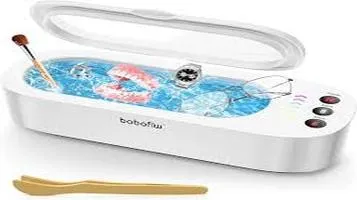The Charm and Consciousness of Secondhand/Vintage Apparel: A Comprehensive Review
Secondhand and vintage apparel offer a sustainable and unique approach to fashion by breathing new life into pre-loved clothing. Secondhand apparel includes gently used garments that are often more affordable than brand-new items, making fashion accessible to a wider audience. Vintage apparel, typically defined as clothing that is at least 20 years old, provides a nostalgic charm and allows individuals to express their style with one-of-a-kind pieces. Both markets are growing as consumers become more environmentally conscious, seeking to reduce waste and support a circular economy. Shopping secondhand and vintage also supports local businesses and fosters a sense of community among fashion enthusiasts who appreciate the stories and history behind each garment. This approach not only benefits the planet but also celebrates diverse and timeless fashion.

In a world where fast fashion dominates the retail landscape, the allure of secondhand and vintage apparel offers a refreshing counter-narrative. These pre-loved treasures not only provide an antidote to the homogeneity of mass-produced clothing but also align with the growing movement towards sustainability and ethical consumerism. As someone who has delved deeply into the world of secondhand and vintage fashion, I can attest to its myriad benefits, unique charm, and its potential to revolutionize our approach to style and consumption.
The Unique Appeal of Vintage and Secondhand Fashion
One of the most compelling aspects of secondhand and vintage apparel is its uniqueness. Unlike the cookie-cutter designs churned out by fast fashion giants, vintage pieces often come with distinct patterns, high-quality fabrics, and meticulous craftsmanship that are hard to find in contemporary clothing. Each item tells a story, carrying with it the history and essence of the era from which it originated. Whether it's a 1950s swing dress, a 1970s bohemian blouse, or an iconic 1990s grunge flannel, these garments offer a tangible connection to the past, allowing wearers to express their individuality in a way that new clothes simply can't.
Sustainability and Ethical Consumerism
The environmental impact of the fashion industry is well-documented, with fast fashion being a significant contributor to pollution, waste, and unethical labor practices. By choosing secondhand and vintage apparel, consumers can make a positive impact on the planet. Reusing and recycling clothes reduces the demand for new production, which in turn decreases the depletion of natural resources and the emission of greenhouse gases. Moreover, many vintage stores and secondhand shops support charitable causes, meaning that your purchase can also contribute to social good.
Quality and Craftsmanship
One of the oft-cited advantages of vintage clothing is its superior quality. In past decades, clothing was made to last, with an emphasis on durability and craftsmanship. Natural fabrics like wool, silk, and cotton were commonly used, and garments were often hand-sewn or produced with great attention to detail. This stands in stark contrast to much of today's fast fashion, which prioritizes low cost and rapid production over longevity. As a result, vintage pieces often outlast their modern counterparts, making them a wise investment for any wardrobe.
Affordability
Another significant benefit of secondhand and vintage apparel is its affordability. While high-end vintage shops and rare collectibles can command high prices, most secondhand stores and thrift shops offer a wide range of stylish, high-quality items at a fraction of the cost of new clothing. This makes it accessible to a broad audience, allowing people from all walks of life to enjoy the benefits of unique, well-made clothing without breaking the bank.
The Thrill of the Hunt
Shopping for secondhand and vintage apparel is an experience unto itself. Unlike the predictable and often mundane task of shopping at a mall or online retailer, hunting for vintage treasures requires patience, persistence, and a keen eye. It's a bit like a treasure hunt, where the joy lies not just in the find, but in the search itself. Each visit to a thrift store or flea market holds the promise of discovering something truly special, whether it's a designer piece at a bargain price or a quirky, one-of-a-kind item that perfectly captures your personal style.
Building a Personal Style
Embracing vintage and secondhand fashion allows for a more personalized approach to style. Instead of being confined to the latest trends dictated by mainstream fashion, you can mix and match pieces from different eras to create a look that is uniquely yours. This encourages creativity and self-expression, enabling you to build a wardrobe that reflects your personality and values.
Challenges and Considerations
While the benefits of secondhand and vintage apparel are numerous, there are also some challenges to consider. Sizing can be inconsistent, as clothing sizes have changed over the decades and vintage items may not conform to modern measurements. Additionally, it can sometimes be difficult to find specific items or styles, requiring more time and effort than shopping for new clothes. However, these challenges are often outweighed by the rewards, and many vintage enthusiasts view them as part of the overall experience.
Conclusion
In conclusion, secondhand and vintage apparel offers a wealth of benefits that extend beyond mere aesthetics. From promoting sustainability and ethical consumerism to providing high-quality, unique clothing at an affordable price, it presents a compelling alternative to fast fashion. While it may require a bit more effort and a willingness to embrace the thrill of the hunt, the rewards are well worth it. For those seeking to cultivate a distinctive, eco-friendly wardrobe, the world of secondhand and vintage fashion is a treasure trove waiting to be explored.






